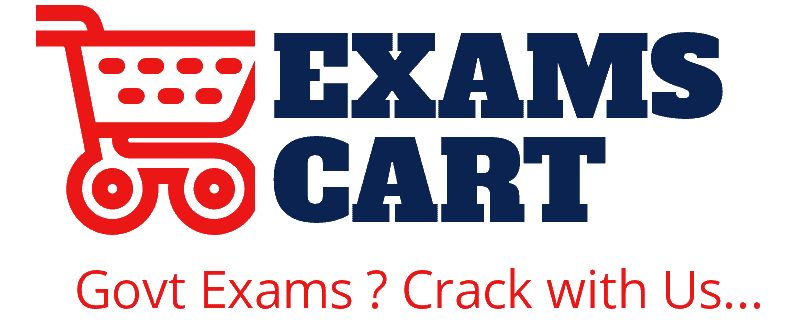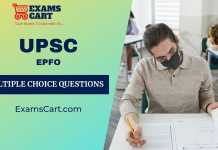Quantitative Aptitude Quiz
Quantitative Aptitude Quiz for Railway and SSC covers an important part of the exam and hence it must be prepared thoroughly. SSC, Railways & many other government job exams are scheduled to be held in the upcoming months. It needs complete understanding of the basic concepts along with thorough understanding. This page will provide you all the quizzes of the Arithmetic section of various exams such as RRB NTPC, SSC CHSL, SSC MTS etc. Practice the quantitative aptitude quizzes given below and surpass the high cut off marks in the exam.
ExamsCart is providing free quizzes to help all the aspirants with the SSC & Railway Quantitative Aptitude section by providing links to attempt quizzes. You can attempt quizzes as per the exam interface before the actual exam by attempting the quizzes on the web browser. It’s time to pull up your socks and burn the midnight oil by practicing the SSC Quantitative Aptitude quiz daily.

Quantitative Aptitude Quiz: Set 93
1.A Bookseller allowed 15% discount on the books sold. Sunil purchased books worth Rs.1500. How much will he have to pay to Bookseller.
a. Rs.1200
b. Rs.1250
c. Rs.1275
d. Rs.1300
2.The thread of a kite makes 60° angle with the horizontal plane. If the length of the thread be 80 m, then the vertical height of the kite will be
a. 40/√3 m
b. 80√3 m
c. 80 m
d. 40√3 m
3. If 20 men working 8 hours per day can complete a piece of work in 21 days. How many hours per day must 48 men work to complete the same job in 7 days?
a. 12
b. 20
c. 10
d. 15
4. A shop-keeper earns a profit of 12% on selling a book at 10% discount on the printed price. The ratio of cost price to the printed price of the book is
a. 45:56
b. 50: 61
c. 99: 125
d. None of these
5.The number of pupils of a class is 55. The ratio of the number of male pupils to the number of female pupils is 5: 6. The number of female pupils is
a. 11
b. 25
c. 30
d. 35
6. 5% more is gained by selling a watch for Rs. 350 than by selling it for Rs. 340. The cost price of the watch is
a. Rs. 110
b. Rs. 140
c. Rs. 200
d. Rs. 250
7.If 60% of the students in a school are boys and number of girls is 812, how many boys are there in the school?
a. 1128
b. 1218
c. 1821
d. 1281
8.It takes eight hours for a 600 km journey, if 120 km is done by train and the rest by car. It takes 20 minutes more, if 200 km is done by train and the rest by car. The ratio of the speed of the train to that of the car is:
a. 3:5
b. 3:4
c. 4: 3
d. 4: 5
9.If m + n = 1, then the value of m3 + n3 + 3mn is equal to
a. 0
b. 1
c. 2
d. 3
10.The maximum number of common tangents that can be drawn to two disjoint circles is
a. 1
b. 2
c. 4
d. Infinitely many
Read More:
| 1. | Complete GK/GS Preparation Bag | Click Here |
| 2. | Static Awareness Preparation Bag | Click Here |
| 3. | English Preparation Bag | Click Here |
| 4. | Banking Awareness Preparation Bag | Click Here |
| 5. | Data Interpretation Preparation Bag | Click Here |
| 6. | Quant Preparation Bag | Click Here |
| 7. | Computer Awareness Preparation Bag | Click Here |
| 8. | Reasoning Preparation Bag | Click Here |
| 9. | Daily Current Affairs | Click Here |
| 10. | Monthly Current Affairs PDF | Click Here |
| 11. | Daily Current Affairs Quiz | Click Here |
| Please Support us Like & Share Our Social Network |
|
| https://www.facebook.com/ExamsCartOfficial | |
| Telegram | https://telegram.me/ExamsCart |
| https://twitter.com/Exams_Cart | |
| https://www.instagram.com/Exams_Cart/ | |
| YouTube | Click Here To Subscribe Now |
| Current Affairs App |
Click Here to Download Free Current Affairs App by ExamsCart.com |
Thank You.
By TEAM ExamsCart.com

(Government Exams ? Crack with Us…)











